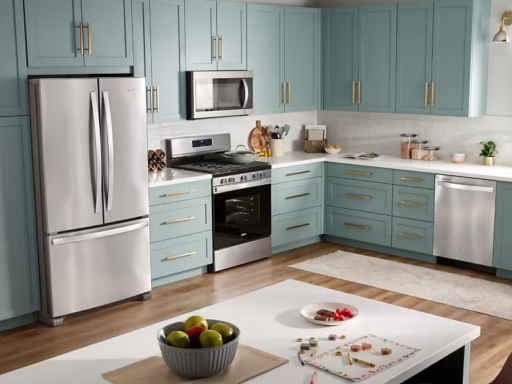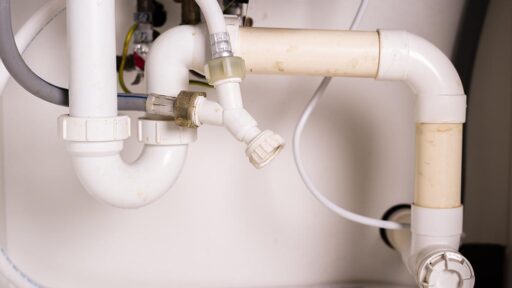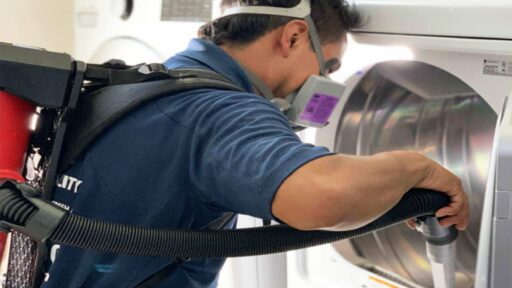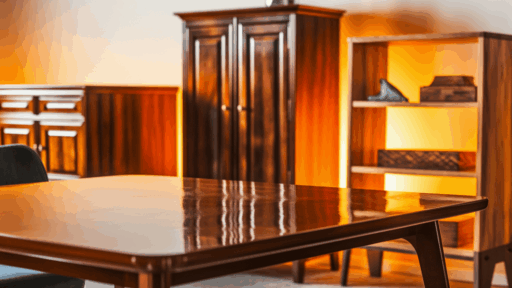When envisioning a kitchen remodel, most homeowners prioritize visible upgrades: quartz countertops,
energy-efficient appliances, or custom cabinetry.
How a whole home salt free water conditioner saves your money during a kitchen remodeling project?
Yet, one invisible factor—water quality—can make or break the longevity and functionality of your dream kitchen.
Hard water is a problem affecting over 85% of American households, silently damages plumbing, stains fixtures, and shortens appliance lifespans.
In 2024, forward-thinking renovators prioritize solutions like salt-free water conditioners (sodium cto safeguard their investments.
This guide dives into why water quality deserves a top spot on your remodel checklist and how integrating a whole-home system can save you thousands in repairs while enhancing daily life.
Understanding Water Hardness and Its Impact on Kitchens
Don’t rush into picking tiles or backsplash finishes without considering your water quality. Seriously!
If your home has hard water (which is super common in the U.S. thanks to all that calcium and magnesium), those gorgeous surfaces could end up with stubborn stains. A quick water test now might save you scrubbing headaches later!
What is Hard Water?
Hard water contains high concentrations of dissolved calcium and magnesium, minerals picked up as groundwater travels through rock and soil.
While safe to drink, these minerals create havoc in kitchens by forming limescale, a chalky, stubborn residue that clogs pipes, stains surfaces, and reduces appliance efficiency.
The Hidden Costs of Hard Water in Your Kitchen
Hard water doesn’t just leave spots on your sink—it can quietly wear down your kitchen over time. From cloudy fixtures and struggling appliances to higher energy bills and extra cleaning, the effects add up fast. Here’s what you need to know before those little issues turn into big (and costly) problems.
Fixtures & Surfaces
When limescale builds up on your faucets, sinks, and glass stovetops, you have to use strong cleaners to get rid of it. This makes them wear out faster. Your shiny stainless steel sink can also get dull and cloudy because of mineral spots.
Appliances
When mineral deposits build up, dishwashers and ice makers have to work harder. That extra effort can bump up your energy bills by as much as 25%.
And if your water heater’s heating elements get coated in limescale? It takes way longer to heat water, making them 30-50% less efficient than they should be.
Daily Frustrations
Appliances like coffee makers and kettles? They’ll need regular cleaning to keep them running smoothly. Otherwise, you’ll be scrubbing away buildup way too often.
And if you’re remodeling your home, do you skip thinking about water quality? Get ready for possible headaches down the line: more repairs, higher bills, and appliances that quit way sooner than they should.
What is a Salt-Free Water Conditioner? (And Why It’s Superior)
Traditional salt-based water softeners exchange calcium and magnesium ions with sodium, altering water’s taste and discharging salty (sodium chloride) brine into the environment.
In contrast, a salt-free water conditioner uses advanced physical methods like Template Assisted Crystallization (TAC) to neutralize hardness by altering the structure of calcium and magnesium so they no longer stick to surfaces.
Here’s why salt-free systems are a game-changer for modern kitchens:
- Zero Sodium, Better Taste: Enjoy the fresh, natural taste of your drinking water and keep your sodium-sensitive plants safe when you water them from the sink.
- Eco-Friendly: No salty wastewater going down the drain, which helps protect rivers and oceans, and keeps you in line with local rules.
- Low Maintenance: No need to mess with salt or complicated settings. Just change the cartridge once a year and you’re good to go.
A salt free water conditioner protects your renovated kitchen. It stops mineral buildup, keeping things clean and working right, all without changing your water.
And a whole-house water filter means healthier drinking water for everyone in your home or commercial property.
Key Features to Look for in a Whole-Home Salt-Free Water Conditioner
Not all conditioners are created equal. Prioritize these features during your remodel:
Certifications
- NSF/ANSI 44 or WQA Gold Seal certification ensures the system effectively reduces scale and meets safety standards.
Capacity & Flow Rate
- Match the system’s grain capacity to your household size. For example, a family of five needs a 12–15 GPM (gallons per minute) flow rate.
Smart Technology Integration
- Modern systems offer Wi-Fi-enabled leak detection or usage tracking, which is ideal for tech-savvy homeowners.
Warranty & Support
- Look for at least a 5-year warranty and brands with robust customer service.
These systems connect to your home’s main water line. So you get cleaner, softened water not just in the kitchen—but also in your laundry room, bathrooms, and even your water heater.
Installation Tips During a Kitchen Remodel
A remodel provides the perfect opportunity to install a whole-home system with minimal disruption:
- Timing is Everything: Coordinate installation during the plumbing rough-in phase, before walls and cabinets are finalized.
- Strategic Placement: Install the conditioner near your main water line entry point to protect all household fixtures, not just the kitchen.
- Professional Partnerships: Collaborate with experienced contractors who specialize in integrating water systems into custom designs.
- Future-Proofing: Leave accessible panels near the conditioner for easy maintenance or upgrades.
Taking these steps ensures seamless integration and maximizes the benefits of your new water treatment system.
Additional Kitchen Remodel Tips to Complement Your Water Conditioner
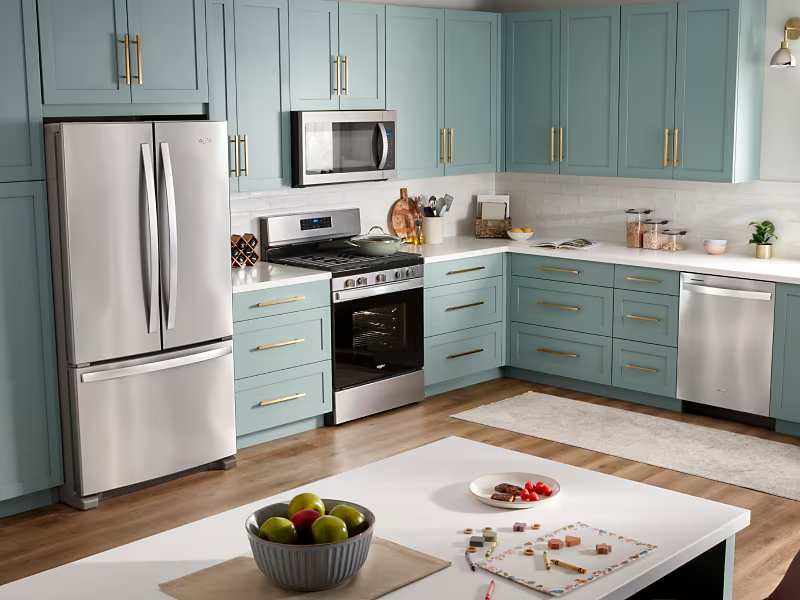
While upgrading your water quality, consider other improvements that can boost your kitchen’s efficiency and longevity:
Water-Efficient Fixtures
Use WaterSense-certified faucets and aerators with your conditioner to save up to 30% more water—without losing any water pressure.
Durable Materials
Pick quartz or granite countertops because they don’t stain as easily as more porous materials like marble.
Go with stainless steel or composite sinks—they’re better at handling limescale and are easier to keep clean.
Smart Appliances
Look for dishwashers that have sensors to check how hard your water is. This helps them adjust their cycles to clean dishes super efficiently.
Eco-Friendly Drainage
Use grease traps and sediment filters to keep gunk from building up and clogging your pipes.
For design inspiration and expert guidance, working with a trusted kitchen remodel specialist can help bring all these elements together harmoniously.
They’ll help you pair high-performance plumbing solutions with beautiful design choices that suit your lifestyle and budget.
FAQs: Salt-Free Water Conditioners & Kitchen Remodels
Will a salt-free conditioner eliminate existing limescale?
No! It prevents new scale but doesn’t dissolve existing buildup. Pair installation with a vinegar rinse or professional descaling.
Can I install the conditioner myself?
While DIY-friendly kits exist, professional installation ensures compliance with local codes and optimal performance.
How much does a whole-home system cost?
Prices range from 800–2,500, depending on capacity and features, far cheaper than replacing ruined appliances.
Conclusion
A salt-free water conditioner protects your new kitchen by stopping hard water damage. It also helps you use water smartly and cleanly throughout your home.
This little change really pays off over time. It helps your appliances last longer and keeps your new sinks and other fixtures looking sparkling new.
As you plan your remodel, remember to explore smart design ideas and layout plans with your kitchen remodel contractor and make water quality part of your renovation strategy from the start.

